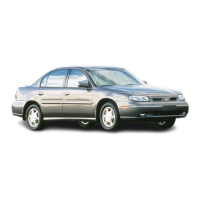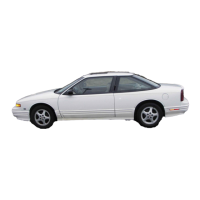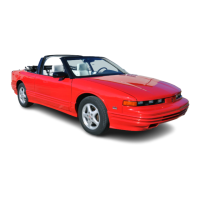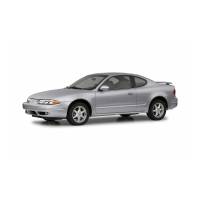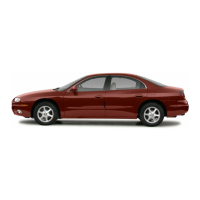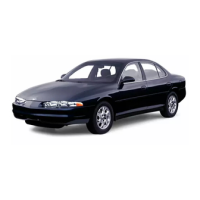clutch pedal, and shift transmission
to
"Neutral" .
2.
Hold
clutch pedal to the floor
throughout the starting procedure. A
starter safety switch prevents starter
from
working when the clutch
is
not
fully depressed. (Select the proper
gear
position before releasing the clutch
pedal.)
3. Operate accelerator pedal and starter
as
outlined in step 3 under "Automatic
Transmission Models".
IF
ENGINE
FAILS
TO
START:
1. Fully depress and release the accelerator
pedal
several
times, then remove foot
from the accelerator and crank the
engine.
2.
If
the engine still does not start, fully
depress the accelerator pedal and hold
to the floor while cranking the engine.
3.
If
the engine has been flooded with
gasoline, it may start to run but not
have
enough power
to
keep running. In
that case, continue cranking with the
accelerator fully depressed until the
engine clears itself of excess gasoline
and runs smoothly.
AUTOMATIC
TRANSMISSION
The shift indicator
is
located on the
instrument
pmel just above the steering
column and the shift lever
is
on the right
side
of the steering
coluflUl.
On models
with consoles, the shift indicator and shift
lever
are
located on the console control
panel.
When
shifting to ''PARK,''
"R
,"
"S ,"
or
"L"
position with the console
shift, the button
on
the tee handle shift
lever
must
be
pushed in momentarily.
• "PARK"-A positive transmission lock
when parking or while starting the
engine.
Pull the shift lever towards you
(column shift) or push in the button on
the tee handle shift lever (console shift)
to select
or
release this position.
Never
move
the shift
lever
to ''PARK'" unless
the
car
is
completely stopped.
•
"R"
Reverse-For backing the car.
Bring
the car to a complete stop before
moving
the shift
lever
into reverse.
•
"N"
Neutral-The out.of-gear position.
It
is
provided for starting a stalled
engine
while the
car
is
in motion and for
running the
engine
while standing with
the brakes applied.
Do
not coast
in
neutral.
•
"D"
Drive
Range-The driving
range
for
normal city and highway driving. This
position permits the transmission
to
operate through its complete
range
of
gear
ratios and to
select
the proper ratio
for road and load conditions.
•
"s"
Super Range-Used when super
performance
is
needed
for
hill climbing
or
"engine braking" downhill. The shift
lever may be moved from
"D"
to
"S",
and
vice
versa, under most operating
conditions.
"Super" should not be used
at speeds
above
75
mph (120 km/h) .
•
"L"
Low Range-For heavy pulling
through mud
or
sand and for "engine
braking" when
going
down steep hills.
The shift
lever
may
be
moved
to
"L"
at
any speed but the transmission will only
shift automatically into
low
range when
car
speed
is
under about 40 mph (60
km/h). The transmission will not upshift
from
low
range as
long
as
the selector
lever
is
in ''L''.
19
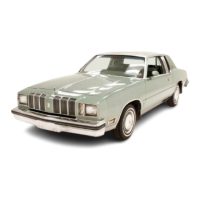
